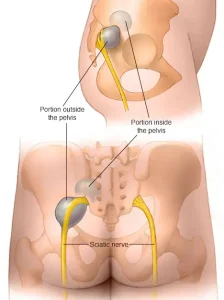Overview
Peripheral Nerve Tumors – Diagnosis and Treatment
Peripheral nerve tumors are abnormal growths that develop on or around nerves. Diagnosis focuses on locating the tumor, identifying its type, and assessing whether it may cause symptoms or become cancerous.
Diagnosis
To diagnose a peripheral nerve tumor, your healthcare professional may recommend several tests:
-
Magnetic Resonance Imaging (MRI):
Preferred imaging method, MRI provides detailed 3D views of nerves and surrounding tissue, helping determine the tumor’s location and whether it is inside or outside the nerve. -
Computed Tomography (CT) Scan:
CT scans offer cross-sectional images of the body. While less useful than MRI for nerve tumors, CT may be recommended if MRI is not possible or if detailed bone information is needed. -
Electromyogram (EMG):
Records electrical activity in muscles during movement, helping locate the tumor and identify affected nerves. -
Nerve Conduction Study:
Often done with EMG, this test measures the speed of electrical signals along nerves. -
Tumor Biopsy:
A small sample of tumor tissue is removed and analyzed to determine tumor type. Biopsy may be performed using a needle guided by imaging or during surgery, under local or general anesthesia. -
Nerve Biopsy:
In some cases, a small sample of nerve tissue is taken to check for cancerous changes.
Treatment
Treatment depends on the tumor type, size, location, and risk of malignancy. Options include:
-
Observation:
If the tumor is benign, asymptomatic, and difficult to remove, your doctor may recommend monitoring with regular imaging and checkups. -
Surgery:
Tumors may be surgically removed if they are large, causing symptoms (pain, numbness, tingling, or weakness), or suspected to be cancerous. -
Follow-up Care:
Post-surgical monitoring and periodic imaging may be necessary to ensure the tumor does not recur.
Advertisement

